A Hilarious Tour Through the Audacious Signs of Seoul
Not exactly the signs you would expect in the South Korean capital.

When thinking about Seoul, South Korea, bursting into laughter is probably not the first thing that comes to mind.
One might envision the technological side of this metropolis, the river of people (it’s a 20 million inhabitants’ capital, after all!), the delicious food, and perhaps the historical sites.
Speaking of the latter, you might encounter holy signs like the one above.
When coming to Korea, though, it wouldn’t pass unnoticed how this country, or better, its capital Seoul, is westernizing at a very fast pace, or as I like to say, ‘sugarizing.’
This trend is evident in the proliferation of sugary goods-selling coffee shops, especially in its most touristy and young districts, such as Mapo-gu and Itaewon.
These areas are now pullulating with signs from cake houses, cupcake shops, ice-cream shops, and even French croissants’ boutique coffee shops — things that have never been traditional in Korea.
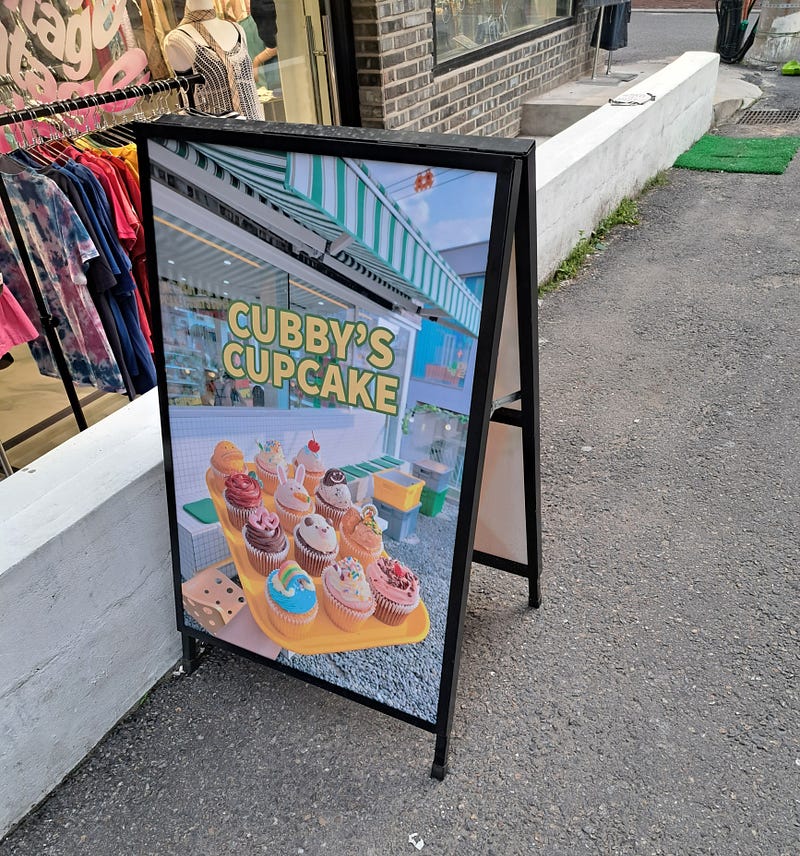
Beyond these shops, never in a million years would I have expected to come across signs displaying peculiar names of restaurants or bars in English that would literally make me burst into laughter or leave me puzzled in the middle of the street.
The choice of names is something we would hardly ever encounter in a Western capital.
Here are a few examples:
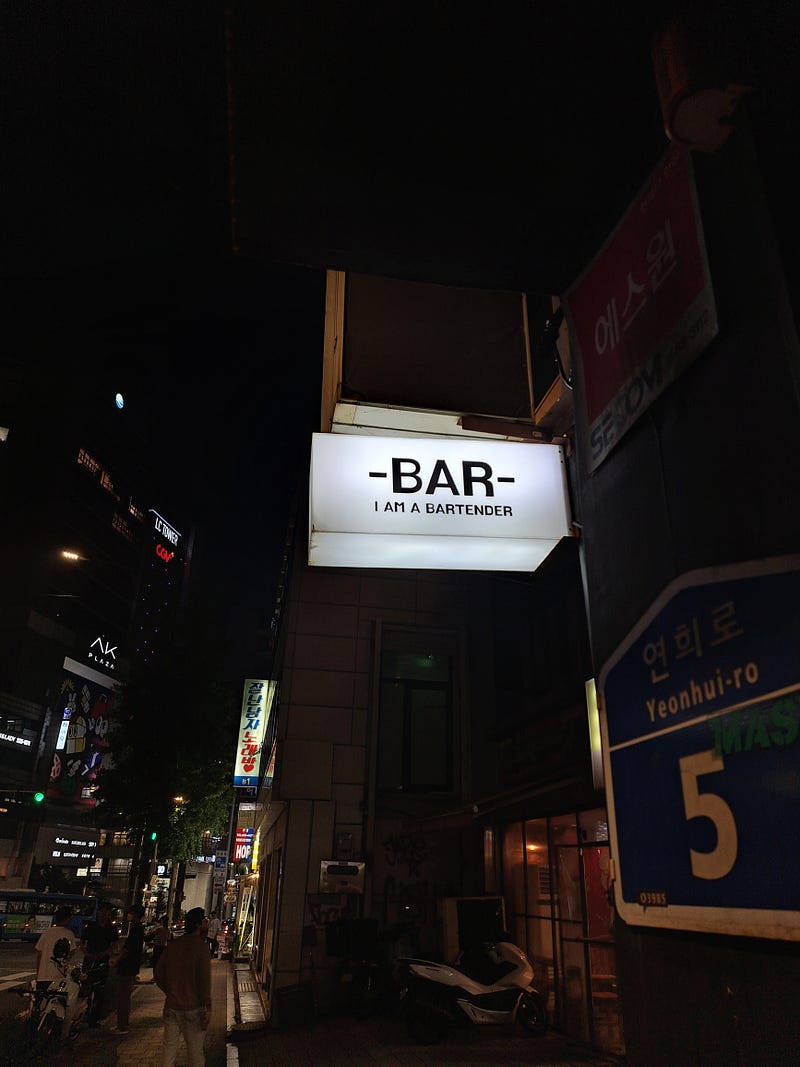
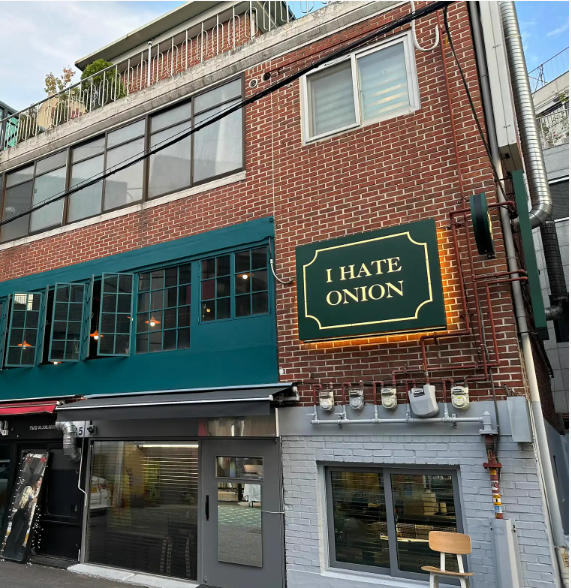
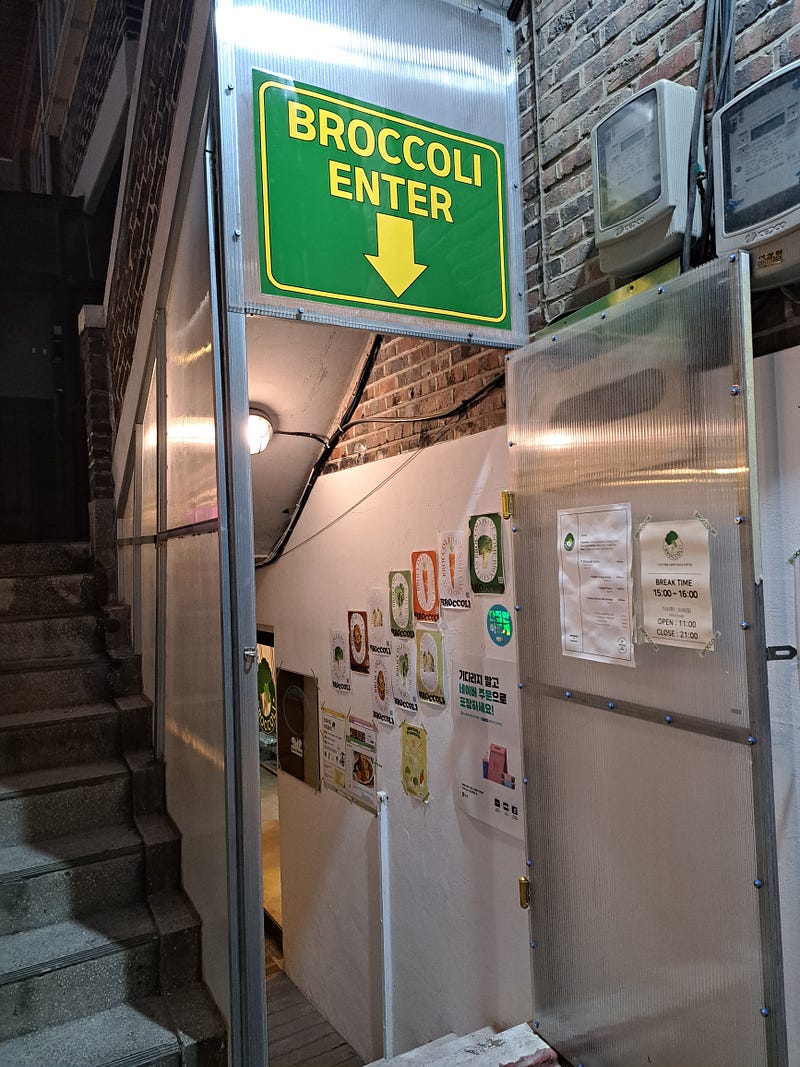
When I first saw these signs, I admit, I whispered a ‘wtf?’ in my mind and laughed at the originality of the name.
But the fun doesn’t stop here.
In fact, even though Korea has a conservative society with traditional rules that regulate the dating scene, gender roles, and marriage, and strongly forbids drugs, it seems like these demure rules don’t apply as much when it comes to touristy areas, like in the example below:
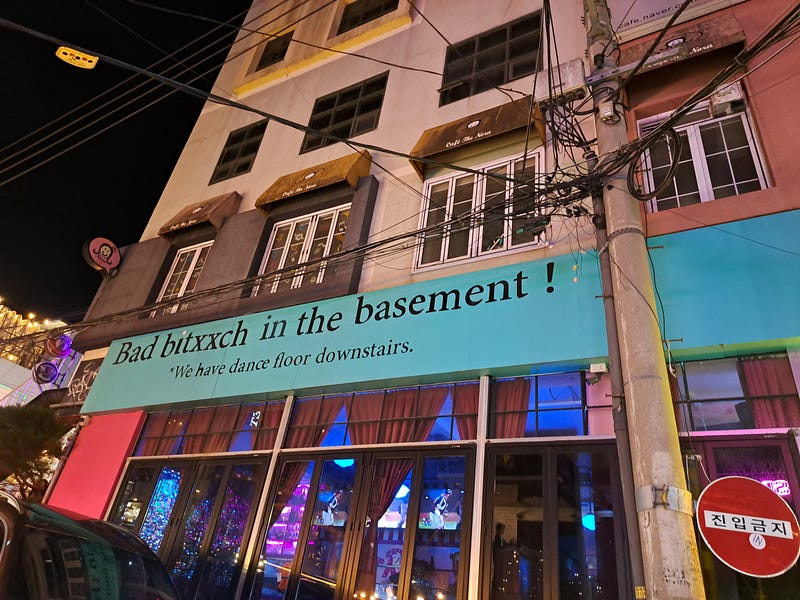
Lastly, the Korean audacity displayed in their signs doesn’t stop at bars and restaurants.
It goes as far as the creative combination of typical foods from European countries, revisited in the Korean way.
For example, I once saw a sign advertising Bolognese Tteokbokki — an Italian dish (Gnocchi alla Bolognese) where the pasta has been replaced by their own rice cakes, Tteokbokki, which indeed resembles the wheat pasta shape we eat in Italy (no picture of that unfortunately).
Or the Portuguese typical custard pastry — pastel de nata, offered in Seoul in multiple, creative versions that would probably make any Portuguese, even the most reserved, a bit mad.

Closing notes.
Spending a few months in Seoul as a digital nomad in 2022 and 2023 taught me a lot about Korean society, particularly about the oxymoron between conservative societal rules and the admiration for continents like North America or Europe.
Something I had never expected to find, though, is that in their ‘westernization’ process, taking place, especially in their increasingly touristy capital, the peculiarity of the choice of English names for businesses stands out. These range from unexpected things, like onions or broccoli, to very descriptive places, such as the bar named ‘I’m a bartender.’
I can’t say that I left Korea without having some good laughter!
Here are my favorite articles of January’s writing prompt:






